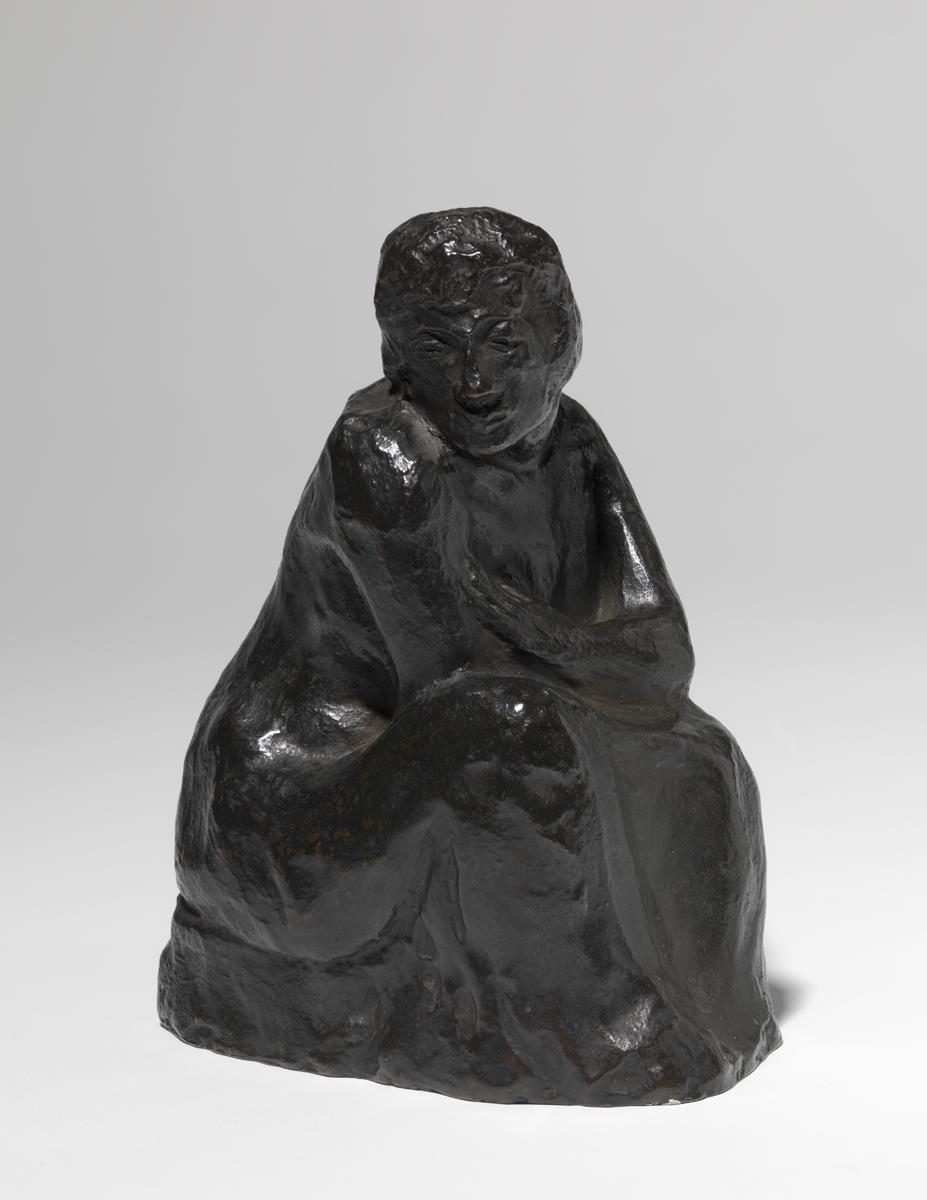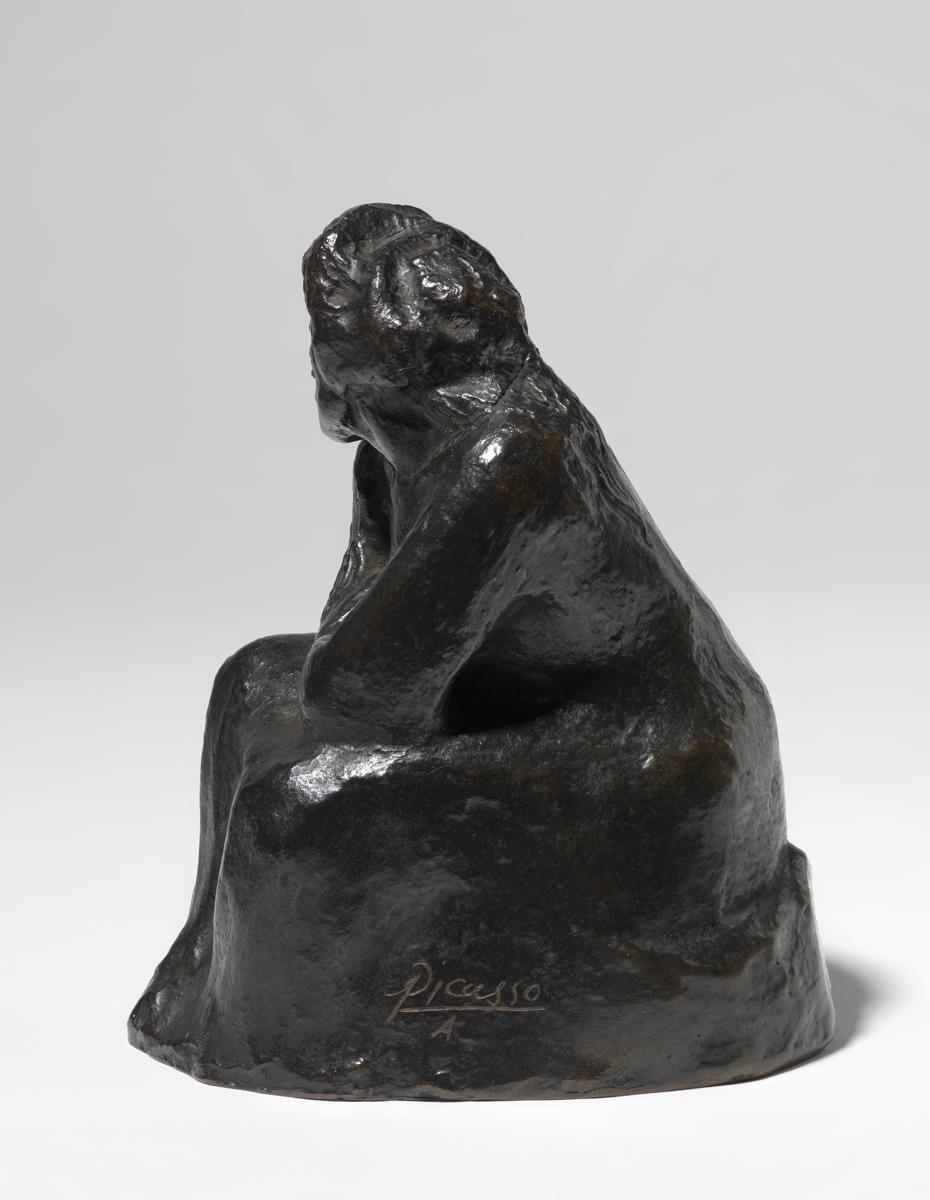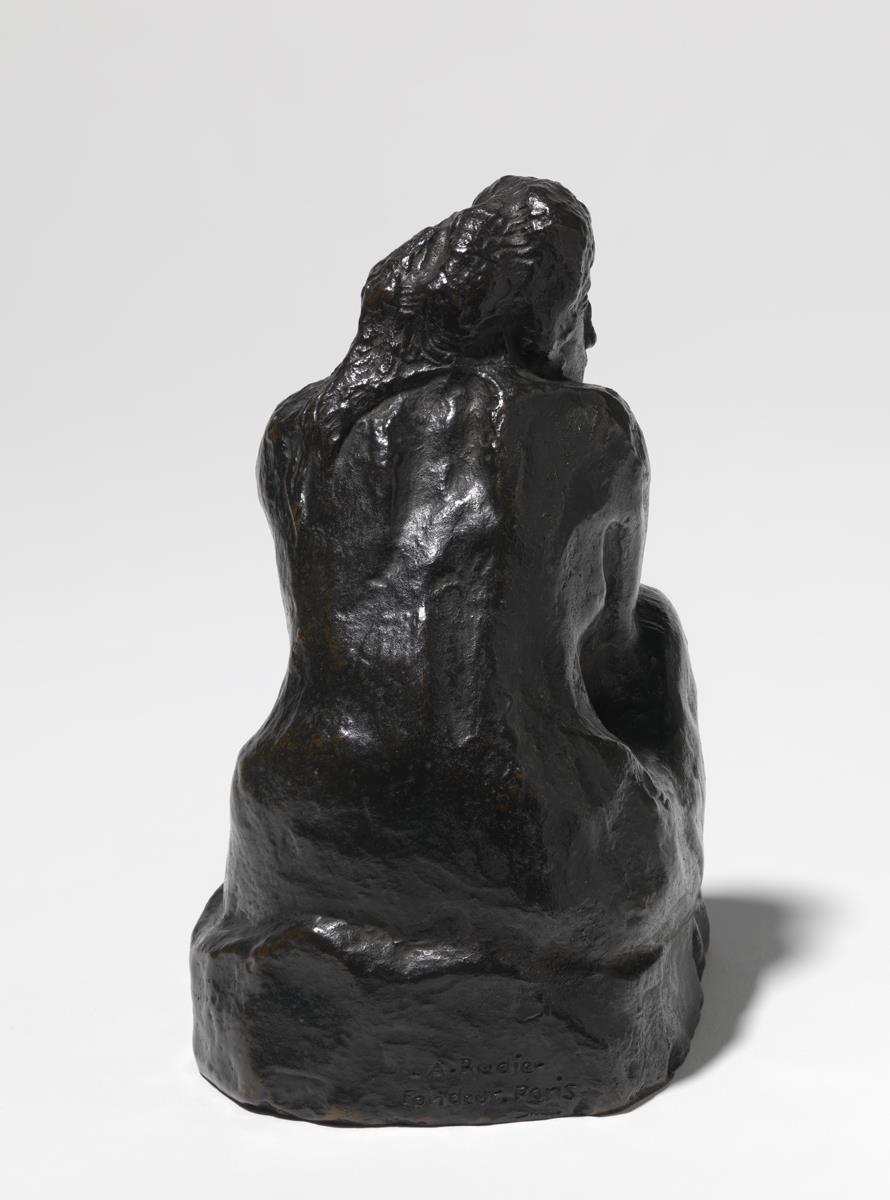Seated Woman

Seated Woman
Seated Woman
"Seated Woman" is the first sculpture made by Picasso and depicts one of the artist’s most repeated motifs – the individual figure. Picasso had begun to frequent sculptors as early as 1899, when he met Mateu Fernández de Soto and Jaume Sabartés, and later on Manolo Hugué, Julio González, Carles Mani and Emili Fontbona. However, it was not until 1902 that he himself took the plunge and began to explore the medium under the guidance of Fontbona, whom he had occasionally portrayed. This small figure was initially modelled in clay by Picasso in Fontbona’s workshop, located in his family’s summer home on 6 Carrer Pàdua in Barcelona’s Sant Gervasi district, and subsequently cast in bronze in an edition of thirteen. The original terracotta is now in the Musée Picasso in Paris.
"Seated Woman", a solid, compact sculpture that can be viewed from multiple angles, was made when Picasso began to explore a new creative process characterised by a drastic reduction in colour and by formal and conceptual revisions of his oeuvre. The motif of the seated woman, downcast and lost in the experience of her own destiny, appears in certain drawings and paintings of the period. It is also related to the monolithic and virtually monochromatic crouching women exhibited by Isidre Nonell at the Sala Parés in January 1902, works that Picasso was able to contemplate on his return to Barcelona following his second Parisian sojourn. Similarly, the sculpture has elements in common with figures depicted in Catalan Romanesque mural paintings.
The modelling of the woman reveals a simplification of her facial features, while her hands and arms are only sketched. This formal reduction is the result of the aforementioned revision to which Picasso subjected his creative process. Nevertheless, other works would have a much more decisive influence on Picasso’s career as a sculptor, once the technique of modelling was fully consolidated in his oeuvre some years later.
Located in
CP Sala 08 dreta




